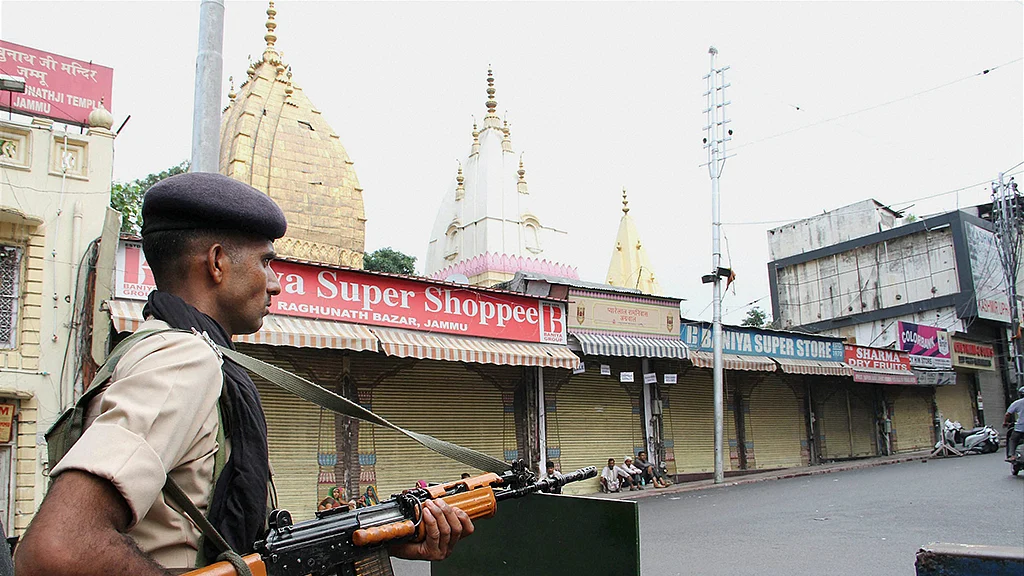Anantnag terror attack: 4 questions that need to be answered
The state and the Centre are yet to order a probe into the incident; when ordered, it must focus on and seek answers to these questions

It has been over 17 hours that militants ambushed a bus carrying Amarnath pilgrims on Monday evening, killing six women and a man and injuring 32. The bus was on its way to Jammu from the Baltal base camp in Ganderbal in central Kashmir, when it came under attack at Batengo village in Anantnag district at around 8:30 pm.
Earlier, the pilgrimage came under attack in 2000, 2001 and 2002 during NDA regime in which over 40 people were massacred. This is the fourth attack on the pilgrimage to the Hindu shrine which stands at 3,888 mtrs and is situated in a narrow gorge in Lidder Valley in Kashmir region.
From Prime Minister Narendra Modi, who asserted that India will never get bogged down by such cowardly attacks and evil designs of hate, to Defence Minister Arun Jaitley, who said the incident should add to India's determination to eliminate terrorism, and Chief Minister Mehbooba Mufti, who described the attack as a “blot on all Muslims and Kashmiris,” there is widespread condemnation of the incident. Home Minister Rajnath Singh today called a high-level meeting with National Security Advisor Ajit Doval, top officials of the home ministry, Intelligence agencies and central paramilitary forces to review the situation in Jammu and Kashmir.
But the state and the central government are yet to order a probe into the incident—which has more questions than answers.
Even though Inspector General of Police (IGP) Muneer Khan blamed the Lashkar-i-Taiba for the attack, the militant outfit has denied its involvement saying that “Islam does not allow violence against any faith. India wants to sabotage the freedom struggle of Kashmiris, therefore it uses such attacks to fulfil its nefarious agenda.”
Considered as one of the most militarised pilgrimages, such an attack seems unlikely under normal circumstances. Here are the questions that the probe must focus on:
Why were Intel reports not taken seriously?
A letter signed by Jammu and Kashmir IGP dated 25 June—which found its way to social media—warned about Amarnath Yatra attack. On June 27—a day before the pilgramme started—a PTI story was published by a section of media that was based on this letter. “Intelligence input received from SSP Anantnag reveals that terrorists have been directed to eliminate 100 to 150 pilgrims and about 100 police officers and officials,” IGP Kashmir Zone Muneer Khan was quoted as saying in the letter which was reportedly sent to the Army, the CRPF, and range DIGs in the state.
Why were there serious security lapses?
A 3-tier grid security is provided for the Yatra. The primary responsibility for providing security lies with the Indian Army whereas several other military and para-military forces including Border Security Force (BSF), Indian Reserve Battalion (IRB), Indo-Tibetan Border Police (ITBP), State Disaster Response Fund (SDRF), National Disaster Response Fund (NDRF), Mountain Rescue Team (MRT) and Anti-Terrorism Squad (ATS) of the State Police, as well as those of the Traffic Police, Security, CID and Armed Police. All actions are coordinated by a Joint Police Control Room (JPCR) to support this process.
Notwithstanding extensive security arrangements, unregistered pilgrims visited the shrine two days ago and were reportedly out on sightseeing without any check.
While the government claims to have thrown a heavy security blanket of over 35,000 to 40,000 troops enroute the pilgrimage, the bus was ambushed only about 100 metres from the headquarters of 1 Rashtriya Rifles.
Why existing safety protocols were compromised?
A report published by the The Telegraph quoting an anonymous police spokesperson says: “the bus from Gujarat was not part of the Amarnath Yatra convoy and therefore enjoyed no security, and had violated the safe-hour deadline.”
The suggestion was that the occupants of the bus had not registered themselves with the Shri Amarnathji Shrine Board, the report notes.
“The official pilgrims move in convoys, escorted by security vehicles from Jammu to the twin base camps of Baltal and Pahalgam. The entire route is heavily guarded. Pilgrimage rules ban Yatra vehicles from the highways after 7 pm as the security cover is withdrawn at that hour.”
Many local residents wondered on social media that night buses were not allowed in Kashmir province and more over after 7 PM, buses ferrying pilgrims stop moving from the camps.
CRPF DG says that the bus was behind a J&K police jeep and the militants fired at the jeep first. But, as former Chief Minister of Jammu and Kashmir Omar Abdullah pointed out in a tweet, that if the pilgrims’ bus was not a registered one, how did it have a J&K police escort following it?
Is there a political angle to the attack on pilgrims?
The bus that came under attack was bearing a registration number of Gujarat. All of the slain pilgrims and at least 19 people who have sustained injuries belong to Gujarat, a state which is going to polls later this year. While Hardik Patel, Alpesh Thakor and Jignesh Mevani are planning fresh protests on issues ranging from farm loan waiver to Dalit rights, anti-GST protests are gaining momentum in different parts of the state. So, is this an attempt to deflect public attention from other raging politico-economic issues?
Follow us on: Facebook, Twitter, Google News, Instagram
Join our official telegram channel (@nationalherald) and stay updated with the latest headlines
- NDA
- NDRF
- GST
- National Security Advisor
- Hardik Patel
- Muslims
- Amarnath yatra
- ITBP
- Kashmiris
- Omar Abdullah
- Prime Minister Narendra Modi
- Sri Amarnath Shrine Board
- Jignesh Mevani
- Anantnag district
- Defence Minister Arun Jaitley
- Inspector General of Police
- Lashkar-i-Taiba
- IRB
- CID
- Joint Police Control Room
- Alpesh Thakor
